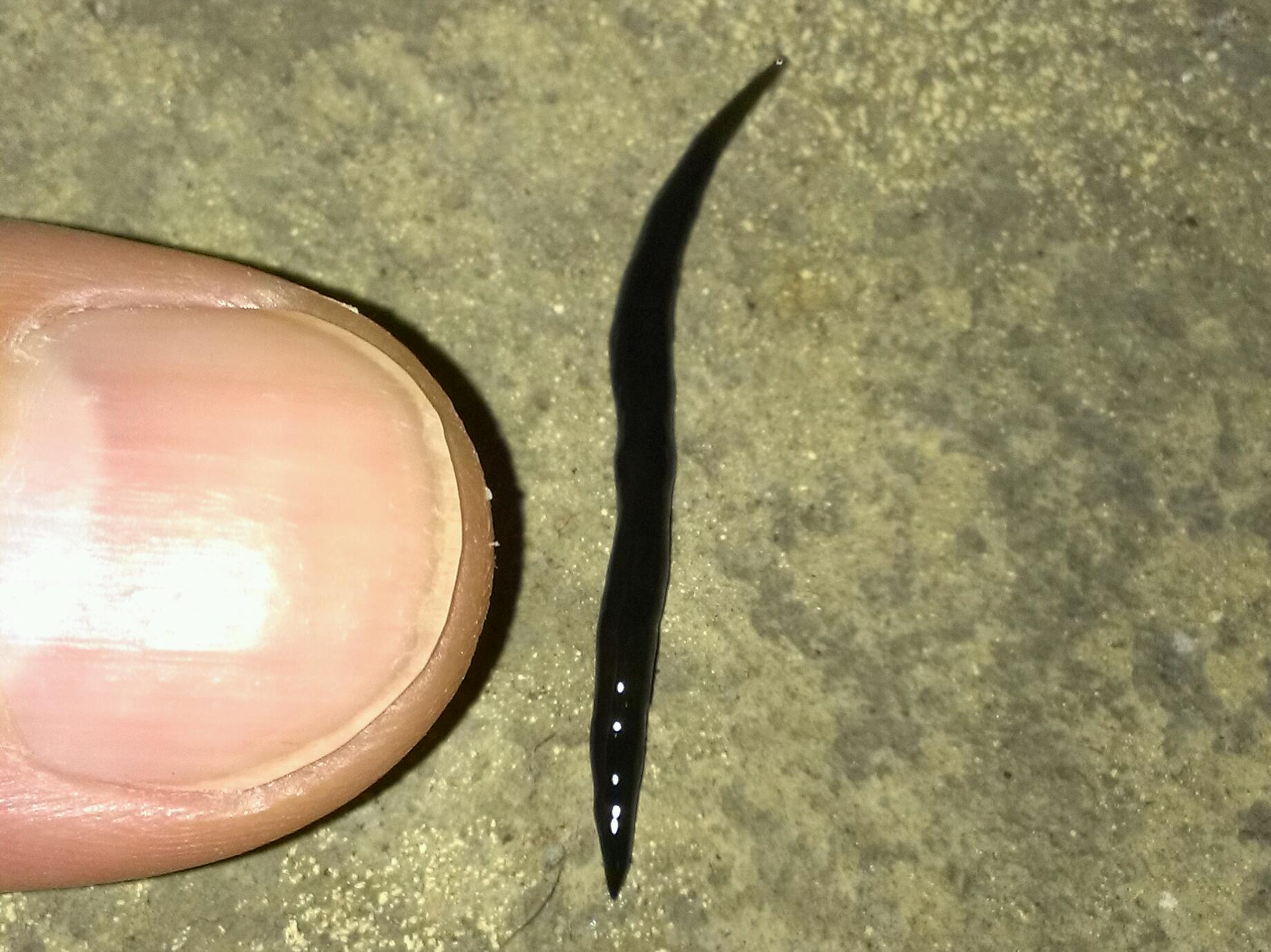Identifying Black Worms: Black Worms In Bathroom Floor

Black worms, also known as drain flies or sewer flies, are a common sight in bathrooms, particularly in areas with high humidity and moisture. These small, slender insects are often mistaken for other types of worms, but their distinctive characteristics help distinguish them.
Physical Characteristics of Black Worms, Black worms in bathroom floor
Black worms are typically 1/8 to 1/4 inch long, with a dark brown or black color. Their bodies are segmented, and they have six legs on each segment. They have a pair of antennae and a pair of compound eyes, which are located on the head. Their wings are short and fringed, and they have a pair of halteres, which are small, club-shaped structures that help them balance during flight.
Habitat and Behavior of Black Worms
Black worms thrive in moist environments, such as bathrooms, kitchens, and basements. They are often found near drains, sinks, and toilets, where they feed on decaying organic matter. Black worms are attracted to moisture and warmth, and they are often seen swarming in areas with high humidity.
Sources of Black Worms
Black worms, also known as drain flies, are a common nuisance in bathrooms. These small, black insects are attracted to damp, organic matter, making bathrooms a prime breeding ground for them. Understanding the sources of black worm infestations is crucial for effective control and prevention.
Conditions That Attract Black Worms
Black worms thrive in moist environments with readily available food sources. Bathrooms provide ideal conditions for these insects due to the presence of:
- Standing water: Black worms lay their eggs in water, and stagnant water in sinks, tubs, or shower floors creates an ideal breeding ground.
- Organic matter: Hair, skin cells, soap scum, and food particles accumulate in bathrooms, providing a food source for black worms.
- Warm temperatures: Black worms prefer warm environments, and the humidity and heat generated by showers and baths make bathrooms an attractive habitat.
- Poor ventilation: Bathrooms with inadequate ventilation can trap moisture and create an environment conducive to black worm growth.
Potential Entry Points for Black Worms
Black worms can enter bathrooms through various entry points. These include:
- Drains: Black worms can enter through drains, especially if they are not properly sealed or have standing water.
- Open windows and doors: Black worms can fly in through open windows or doors, especially during warm weather.
- Cracks and crevices: Small cracks or crevices in the bathroom walls, floors, or around pipes can provide entry points for black worms.
- Plumbing vents: Black worms can enter through plumbing vents, especially if they are not properly screened or have gaps in the mesh.
Managing Black Worms

Black worms are a nuisance in any bathroom, but especially in those that are frequently used. They are not harmful to humans, but they can be a sign of a bigger problem, such as a moisture issue or poor hygiene. Fortunately, there are steps you can take to eliminate black worms and prevent them from returning.
Removing Black Worms
Black worms are often found in damp areas, such as the floor around the toilet, shower, or sink. You may also find them in the grout between tiles or in the drain.
- Identify the Source: The first step is to identify the source of the black worms. This could be a leaky pipe, a clogged drain, or simply excessive moisture.
- Clean the Area: Once you have identified the source, you need to clean the area thoroughly. This involves removing any visible black worms and their eggs, as well as cleaning the surfaces with a disinfectant.
- Dry the Area: After cleaning, it is important to dry the area thoroughly. This can be done by using a towel, a hairdryer, or a fan.
- Seal Cracks and Gaps: Once the area is dry, you should seal any cracks or gaps in the floor or walls. This will prevent black worms from entering the bathroom.
- Address the Source: The final step is to address the source of the moisture. This may involve fixing a leaky pipe, unclogging a drain, or improving ventilation.
